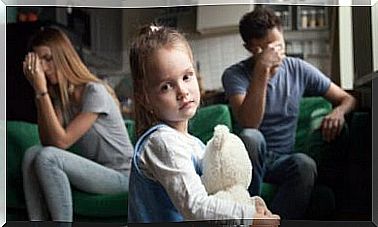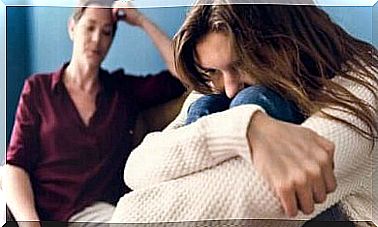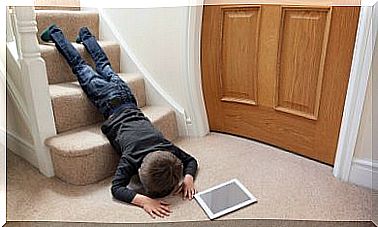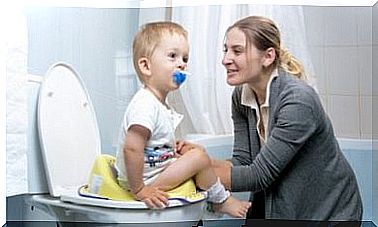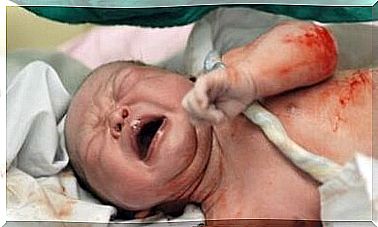Reversing Habits To Treat Tics In Children

Nail biting, hair pulling, stuttering… There are many tics that children can have. At first they seem harmless, but over time they can increase and interfere with children’s daily lives. Fortunately, we have tried and tested procedures for dealing with these types of problems, with habit reversal standing out.
It is common for parents to try to prevent the onset of tics by criticizing or punishing their children. On the other hand, they may try to reward them when they stop. However, none of these tactics will be effective. It is not a voluntary act that the child can control.
However, by reversing habits, parents can ensure that their children have the resources they need to combat their nervous tics.

What are nervous tics in children?
Nervous tics are simple or complex behaviors that children perform repeatedly or involuntarily. These tics in children can be motoric, such as biting the fingers or rocking back and forth. They can also be vocal, such as coughing constantly or repeating the last word heard.
They arise in response to a state of anxiety or nervousness experienced by children, and they disappear during sleep. These nervous tics are preceded by an internal feeling of restlessness, nervousness and uneasiness. It can only be relieved by the repetition of the behavior. That’s why it’s really hard to resist the impulse.
Moreover, they are in time a habit and appearance they not only fear, but also moments of frustration or boredom.
What does the reversal of habits involve?
The reversal of habits is the most effective procedure to treat tics or twitching in children. It includes a series of techniques and exercises that help children break the habit that interferes with their lives.
Definition and Registration
First of all, we must define, in a concrete and operational way, what the nervous tics consist of. Likewise, it is necessary to keep track of how often they occur and what situations they cause. To do this , an adult must observe the child and note when the tics occur.
Relaxation
Taking into account that the tic arises from the child’s internal feelings of anxiety and restlessness, it is easy to understand why relaxation techniques are very useful. By training the child in these strategies, you provide a tool that will help them lower their general level of anxiety and regulate their nervousness in certain situations.
Incompatible response: the key to habit reversal in childhood tics
This is the key to this intervention. You must choose a behavior incompatible with the tic itself, which children can do whenever they want to perform this habit. For example, holding a pen in hand for a few minutes helps avoid the temptation to scratch their scalp.
The child should practice this a few times every day until it feels natural to him. Then they have to practice it voluntarily every time they feel the tic coming on, to keep them from doing it.
Positive reinforcement
It’s important to reward your child for the effort they put in, even before they get rid of this disorder completely. So make weekly goals, such as halving the frequency of the tic. Then, if the child achieves the goal, reward the child with praise and congratulations or even with a small material prize to keep them motivated.

Why does habit reversal work for tics in children?
Changing habits is a procedure that requires practice and perseverance. However, it is simple and effective. The key to its success lies in two things.
First , it makes the child aware of his tic in any situation. It is no longer an automatic response that goes unnoticed. At the same time, it creates an incompatible behavior that prevents the tic from repeating itself, so that the tic decreases in frequency until it goes away completely.
In short, researchers have proven its effectiveness in children with all kinds of nervous habits, and it has shown good results. The motivation of the child and the help of parents and teachers will help to reduce or eliminate these tics that make the child uncomfortable.


